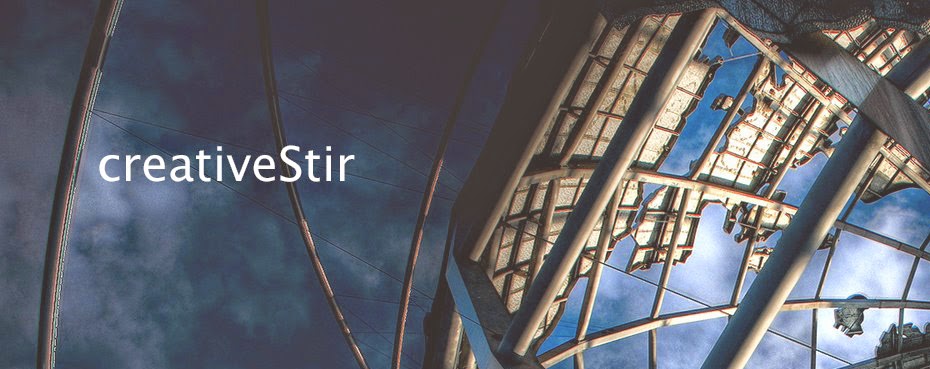Student choice programs can be disruptive to traditional education structures and mindsets. Personally, I've always seen that as a good thing if such things are done thoughtfully.
Having started and mentored a program where students choose their own topics to study, I've learned a thing or two. In 9 years we covered over 1000 projects and made connections with professionals around the globe.
Opening Multidisciplinary Doors
The simple rubric above was developed as an entry point with students to begin and develop interdisciplinary ideas. Students drafted each stage of the rubric and kept revising through the entire process their own evaluation criteria on what they perceived as beginning through expert work. It's simple but it proved very successful over the years.
Many teachers from different disciplines started to stop in the Lab to help students or made themselves available to Lab students by appointment. Many of those teachers started to have conversations with me about introducing more student choice into their own courses.
Many discussions started brewing about how multidisciplinary courses could be scheduled. As usual, time and conventional schedules proved to be the biggest obstacle.
Expanding Thee 'Course of Studies'
When the Lab started quite a few students chose to pursue extensions of existing 'tech centric' courses and 'tech' themes. i.e. Digital Photography II, Advanced Digital Design, Architecture II, etc.
Things got interesting when students wanted to pursue course extensions in other departments. The school didn't offer an AP French program and a student came to the Lab with aspirations to conquer this AP course, self paced, with outside mentors. With some reservation, the school administration approved the project. The French department assisted in mentoring, and we hooked the student up with online resources, a local french speaking mentor and two abroad. All said and done the student aced the AP French exam in one semester.
Then things got interesting.
Three more students requested the opportunity to take AP French in the Lab. A few others came forward and wanted to take existing courses in language, and mathematics courses at a self-directed, faster pace. The school administration intervened. Students would not be allowed to take existing courses in self paced fashion in the Lab. Additionally, the interest in AP French spurred the French department to create a new AP French course offering. Students could no longer take AP French in the Lab.
While progress was made... traditional structures and battles over territory did as well.
Of course, some students would choose conventional courses... but what about students who would like other options? Should students be denied such opportunities?
"Student inquiry into the educational process"
To create some scaffolding into project based learning I asked students to work collaboratively on three projects: How has technology impacted the news, healthcare, and education... the latter we called 'Education Revisited.'
The work in the education project often stirred up the most intense debates. We started out the project by asking students what their strengths and weaknesses as learners were and devised strategies to improve. We dove into cognitive learning theories, and then on to school structures. Many students saw immediately that how they learned best might not always fit in with traditional school structures, and the strengths and weaknesses technology brings to the table. From there, students examined current practices in their school compared to innovative schools around the globe. Putting all the pieces of that puzzle together helped a lot of students take deeper strides into their learning motivations - or lack thereof, and buying into their own pursuits.
It was challenging to existing systems and practices at the school, especially ones that the majority of folks felt didn't make sense or had lobbied to change for extended periods of time. That's a good thing, a healthy thing. Inviting student inquiry into the educational process is important. Why do systems work as they do? Have these systems or practices been evaluated from the student perspective?
As a result of this 'Education Revisited' work, students often made proposals to improve systems and options within the school.
The Student for a Day Project
BBA Student for a Day Project from Adam Provost on Vimeo.
The Student for a Day Project was one of our most successful and certainly the highest profile group projects in the Lab. When we were discussing 'the school schedule' and how it impacted families one student simply asked, I wish teachers could see this schedule from our perspective. "Great idea," I said. "How can we do that?"
Through class discussions we decided to invite teachers to become students for a day. We'd do pre- production interviews, run time during the event, and post production interviews... with the story told through the participants words. Students in the Lab chose teachers, setup schedules, gathered materials, and arranged all the shooting and editing work.
It proved to be great PD for all involved, students and adults alike. Many teachers came forward and asked to participate when we did the project again. Many discussions started on school start time, class duration, transition times, lunch time allocation, and workflow.
We've passed the full production notes on to many schools. If you'r interested in discussing the project just let me know.
So...
Opening the door to student topic choice and inquiry into the 'educational process' will create ripples. It will challenge traditional school structures.
What would your response / will your response be to some of these challenges? How many traditional hurdles will you clear? How many will you continue to stumble over or just ignore for more 'business as usual?'
<<<
Links to the full 'What Are We Teaching and Why? series:
8. Start overhauling tired learning spaces
7. #educolor and literary choices
6. Positive ripples of student choice
5. Common roadblocks
4. Student pursuing their interests
3. The Other Math
2. Rethinking Math Requirements
1. AP Classes




